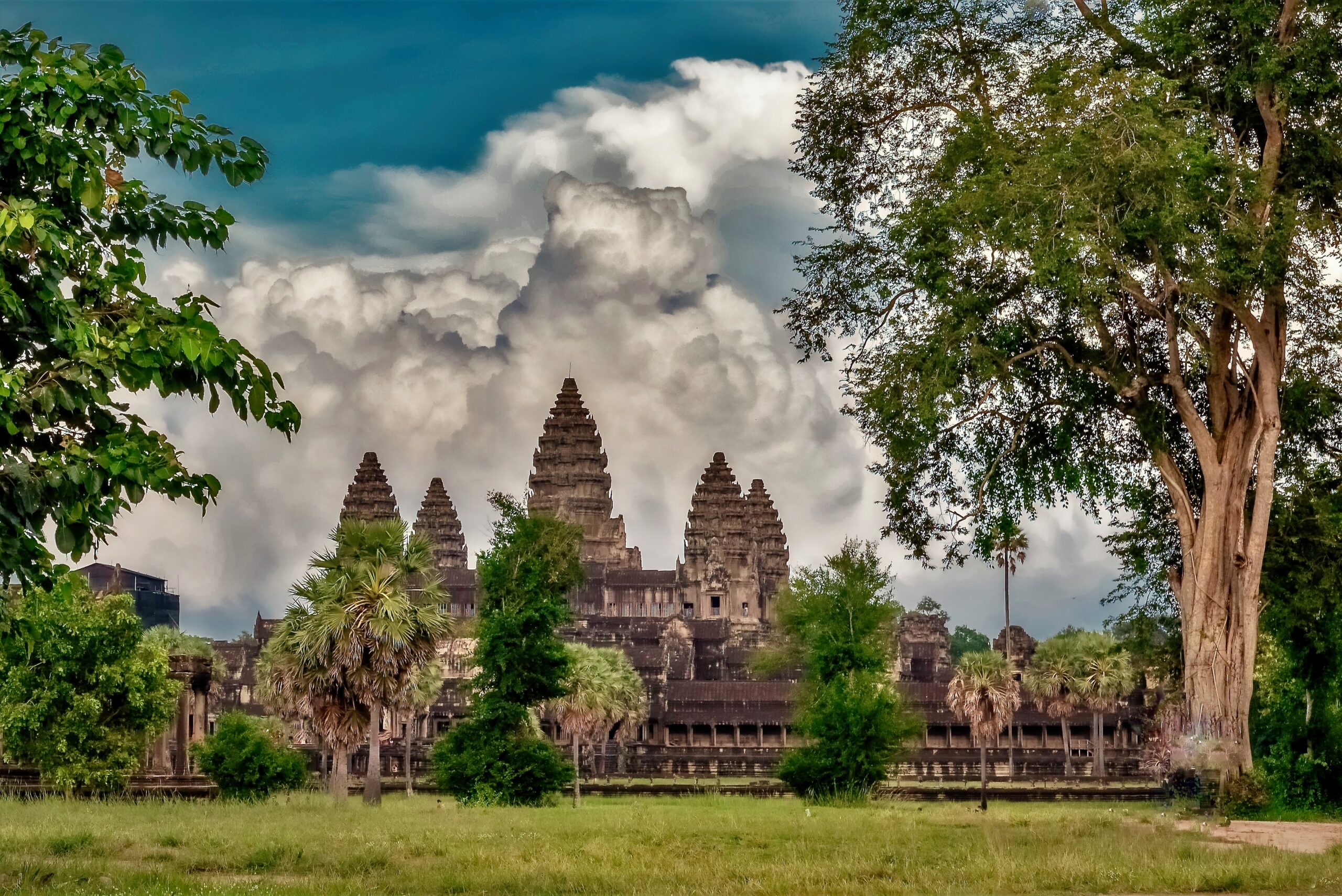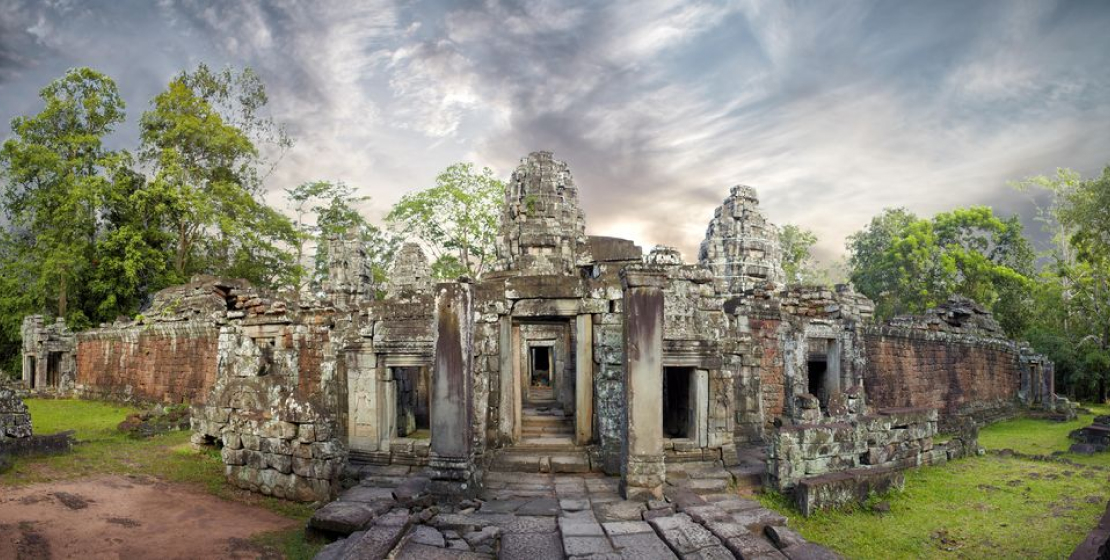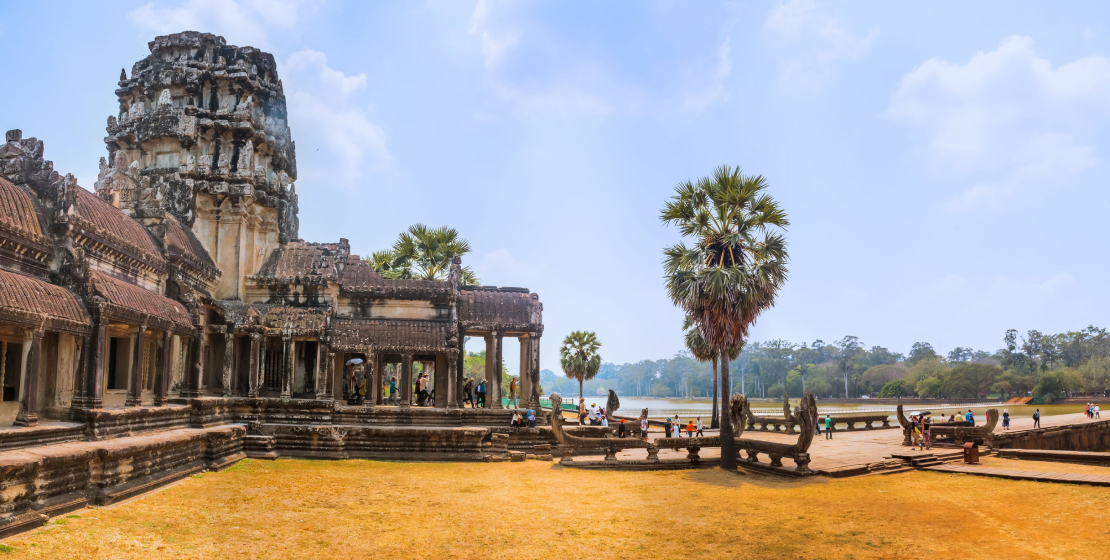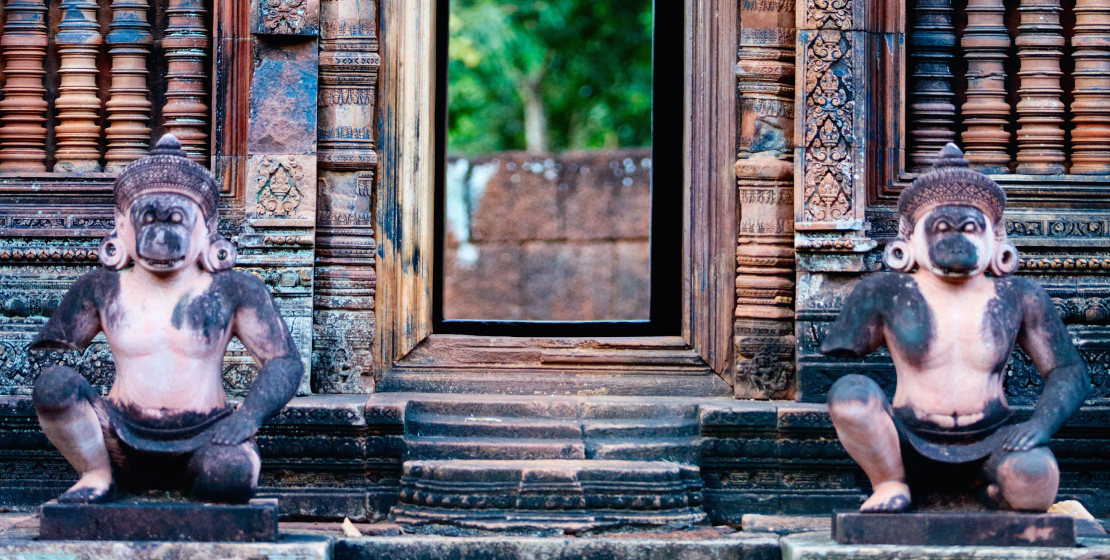THANK FOR YOUR INTEREST
We will contact you soon. How shall we contact you?
Or
Leave us you email
We will contact with you soon. How can we contact you?
SIEM REAP – A DAY IN ANGKOR WITH AN ARCHEOLOGIST
IN CONSTRUCTION


HIGHLIGHTS
– Spend a full day tour by local Tuk tuk.
– Visit the mains temples of Angkor : Angkor Wat, Ta Prohm, Bayon and Angkor Thom.
– Spend the day with an archeologist during the visit of Angkor.
Join our wonderful tour to encounter the most impressive monuments of Angkor, guided by a worldwide distinguished architect-archaeologist.
You will spend this adventurous day in the company of Olivier Cunin, architect-archaeologist and a true expert of Angkor and the Khmer temples. He will introduce you to the history of Angkor from the builders to the French archaeologists who restored the site. He is currently working on several restoration projects and has contributed to the latest inventory of the Banteay Srei site.
Embark on a Tuk-Tuk ride to discover the legendary temple of Angkor Wat. It’s the most prestigious monument of Cambodia, both by its mythical architecture and impressive dimensions, comparable to the Forbidden City of Beijing. It was designed to reflect, in the Mortal Worl, Mount Meru, the celestial home of the deities.
Then, you’ll continue to reach the temple of Preah Khan. Enigmatic in many ways, it was built by King Jayavarman VII who dedicated it to his father. You’ll wander through a maze of doors to reach some of the most beautiful sculptural treasures spared by time.
Lunch will be served in a local restaurant on the site.
In the afternoon, discover the great royal city of Angkor Thom. King Jayavarman VII built a laterite rampart forming a square of 3 kilometers on each side with an outer moat of one hundred meters wide to protect his city from invaders.
After admiring the enigmatic gates of this city, you’ll reach the Bayon, the central temple of this fortified city. At first sight, this mysterious temple appears as a disorder of blackened stones but it’s actually a magnificent tangle of some fifty towers, revealing faces as you come closer.
Walk around the site to explore the endless monuments including the Baphuon, one of the largest restoration projects ever undertaken by France, then the Phimeanakas located in the enclosure of the Royal Palace and finish at the Terrace of the Elephants where the king and his court attended the games and processions.
In the late afternoon, drive to Ta Prohm, “the ancestor Brahma”, to relish in the magical atmosphere of the temple. It’s an authentic place, left untouched to preserve the memory of its natural state from the time it was discovered by the explorers who revealed Angkor to the West. Here, stone and the roots of century-old cheese trees intertwine in a beautiful romantic embrace.
Useful Information
Activity available everyday, departure 8am
Pick up at your Hotel
Private Tranfer
Professional Guide



